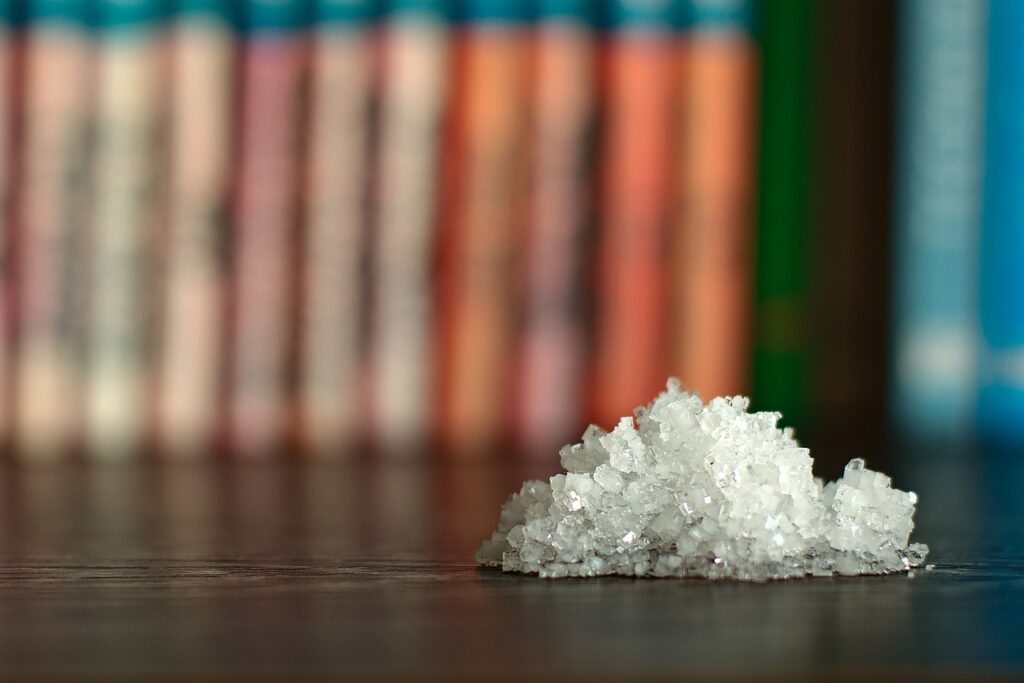When a substance’s experimentally obtained molar mass deviates from its theoretical or predicted value, this is called as anomalous molar mass. The reported molar mass may rise or fall as a result of the association or dissociation of molecules in a solution, which frequently causes this discrepancy.
It is essential to understand this idea, particularly in studies of colligative qualities, where molar masses are calculated utilising characteristics such as osmotic pressure, vapor pressure lowering, freezing point depression, and boiling point elevation.

Causes of Abnormal Molar Mass
The association and dissociation of solute molecules in a solution are the two main causes of anomalous molar masses.
Association of Molecules
When solute molecules group together to create bigger complexes in a solution, association takes place. This usually occurs in non-polar liquids, where the individual molecules assemble due to van der Waals forces or hydrogen bonds. The experimentally determined molar mass seems higher than expected because association causes the number of particles in solution is being decrease.

Example:
The presence of acetic acid (CH₃COOH) in benzene tends to reduce the number of dissolved particles and increase the observed molar mass by forming dimers, which are pairs of molecules bound together by hydrogen bonds.
Dissociation of Molecules
Dissociation is the process when a solute breaks down into smaller particles, such as ions, when dissolved in a solvent. This primarily occurs in strong electrolytes, such as salts, bases, and acids, or ionic compounds. The reported molar mass seems lower than anticipated since colligative qualities rely on the quantity of dissolved particles.
Example:
A decreased observed molar mass results from the dissociation of sodium chloride (NaCl) in water into Na⁺ and Cl⁻ ions, which essentially doubles the number of dissolved particles.

Role of Van’t Hoff Factor
The Van’t Hoff factor (i) is added to account for the anomalous molar mass. It takes into consideration how much a solution is associated or dissociated.
For dissociation: I > 1 (e.g., NaCl, KCl, HCl)
For association: I < 1 (e.g., CH₃COOH in benzene)
For non-dissociating, non-associating substances: I = 1
The right molar mass is obtained by modifying colligative property equations using the Van’t Hoff factor:
Corrected molar mass = Observed molar mass / i
When more particles are created, the effective molar mass of dissociating chemicals falls, but when fewer particles are present, the effective molar mass of associating substances increases.

Experimental Evidence and Applications
The idea of anomalous molar mass is frequently employed to assess how strongly compounds associate or dissociate in various solvents. Here are a few examples of practical uses:
Determining molecular structures: Scientists can determine whether a molecule is present in solution as a monomer, dimer, or polymer by using abnormal molar mass measurements.
Electrolyte behavior in solutions: By examining how much an acid, base, or salt dissociates, this behaviour aids in determining its strength.
Drug formulation and solubility studies: How molecules behave in various solvents affects how medications are created and administered to the body.
Summary
Colligative properties reveal surprising results because of abnormal molar masses caused by molecule attachment or dissociation in solution. The Van’t Hoff factor is a key idea in physical chemistry since it aids in rectifying these numbers. This phenomena is vital for researching the behaviour of compounds in various solvents, evaluating solutions, and computing molecular weights.
When a substance’s experimentally determined molar mass deviates from its predicted theoretical value as a result of molecular association or dissociation in solution, this is called as abnormal molar mass.
Abnormal molar masses occur due to:
• Association – When molecules combine to form larger units, decreasing the number of particles (e.g., acetic acid in benzene).
• Dissociation – When molecules break into smaller units, increasing the number of particles (e.g., NaCl in water).
A higher-than-expected molar mass results from association, which lowers the amount of solute particles in solution. This frequently happens in non-polar liquids where molecules bunch together due to van der Waals forces or hydrogen bonds.
A lower-than-expected molar mass is the outcome of dissociation, which increases the amount of solute particles in solution. Ionic chemicals and strong electrolytes that separate into ions in solution are common examples of this.
The Van’t Hoff factor (i) takes into consideration how much a solute in solution associates or dissociates. Using the following formula, it fixes the molar mass computations in colligative property experiments:
Corrected molar mass = Observed molar mass / i
i > 1 for dissociation (e.g., NaCl, HCl).
i < 1 for association (e.g., CH₃COOH in benzene).
i = 1 for substances that neither associate nor dissociate.
The amount of solute particles in solution affects colliding properties such osmotic pressure, vapor pressure reduction, freezing point depression, and boiling point elevation. Abnormal molar masses might result from molecule association or dissociation when these properties show an unexpected value.
Determining a compound’s molecular structure aids in determining if it is present in solution as a monomer, dimer, or polymer.
The strength and ionisation of acids, bases, and salts are investigated via electrolyte behavior analysis.
Pharmaceutical formulations: Molecular interactions and solubility in various solvents for the development of new drugs.